ACL Injuries in Sport
Read More >
Lower-grade ACL sprains have less structural damage and, therefore will have less loss of function. The knee, therefore, will be more stable. Grade 1 sprains and can recover well with the correct advice, management and exercises. Grade 2 and 3 sprains have more damage to the ligament, and therefore there will be more loss of function of the knee, and the joint may be unstable.
In many cases, rehabilitation exercises can be very practical to improve this, but in some of these more severe injuries, it is not enough to return the knee to full function. Therefore, for those who want to return to demanding sports such as football/soccer, rugby, gymnastics or basketball, it may be advised that they have additional help in the recovery in the form of surgery to augment or repair the ACL.
Here, we will show you the common ACL tear exercises without surgery. These can be done after an ACL injury, once the knee has settled with the initial rest period, ice, compression and elevation.
These can also be good pre-ACL surgery exercises known as ACL prehab exercises.
Step your injured leg forwards. Keep your foot flat on the floor while you bow forwards, bending from your hips. You should feel a stretch at the back of your thigh.
Hold for 45 seconds then relax.


Stand with the ball of your feet on the edge of a step. Hold on for support while you lower your heels down as far as you can. Keep your knees straight. You should feel a stretch along the back of you calves.
Hold for 45seconds then relax.
Stand on your uninjured leg and bend your injured leg to hold your ankle behind your hip. Keep your body upright, push your hip forwards and have your knees parallel to each other. Pull your heel closer to your hip. You should feel a stretch along the front of your thigh.
Hold for 45 seconds then relax. If this is painful to do, do not continue but try the foam roller exercise below.
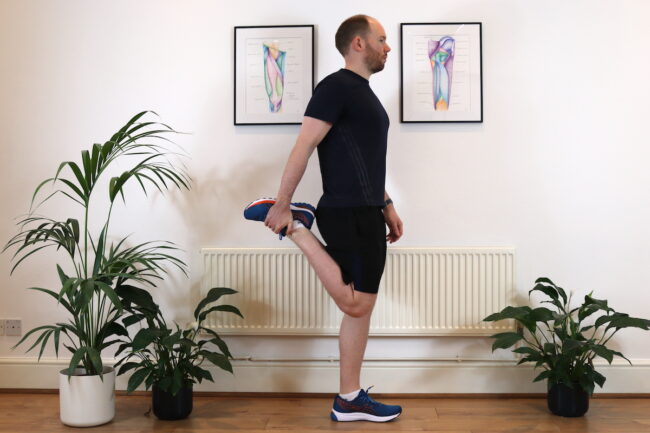
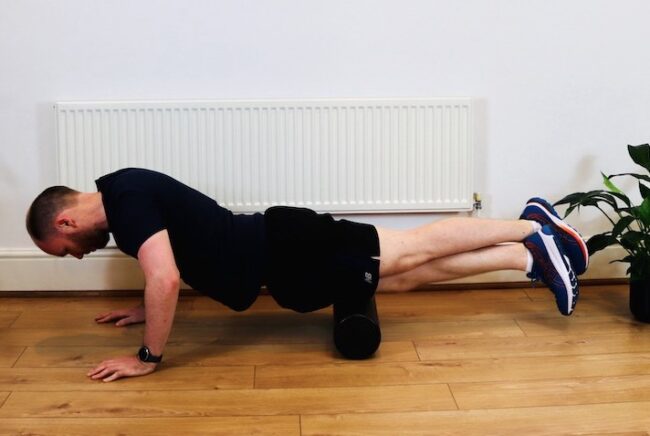
Lie on your front with the foam roller under your thighs. you should hold you weight on your hands or forearms. Slowly roll your weight forwards over the roller stopping at tender points to release these.
Spend 2-5 minutes rolling, then relax.
When the ACL is sprained the muscles that surround the knee can become inhibited and will not contract as effectively as before.
These ACL exercises are focused on switching on those affected muscles and getting them contracting more effectively.
Sit with your injured knee over a roller or pillow. Push your knee down into the pillow or roller and squeeze your quadriceps to straighten your knee so that your ankle lifts. You should see and feel your quadriceps muscle working, in particular, try to get all parts contracting, especially the inner part.
Hold this muscle squeeze for 10 seconds, then relax, and repeat 6-10 times.
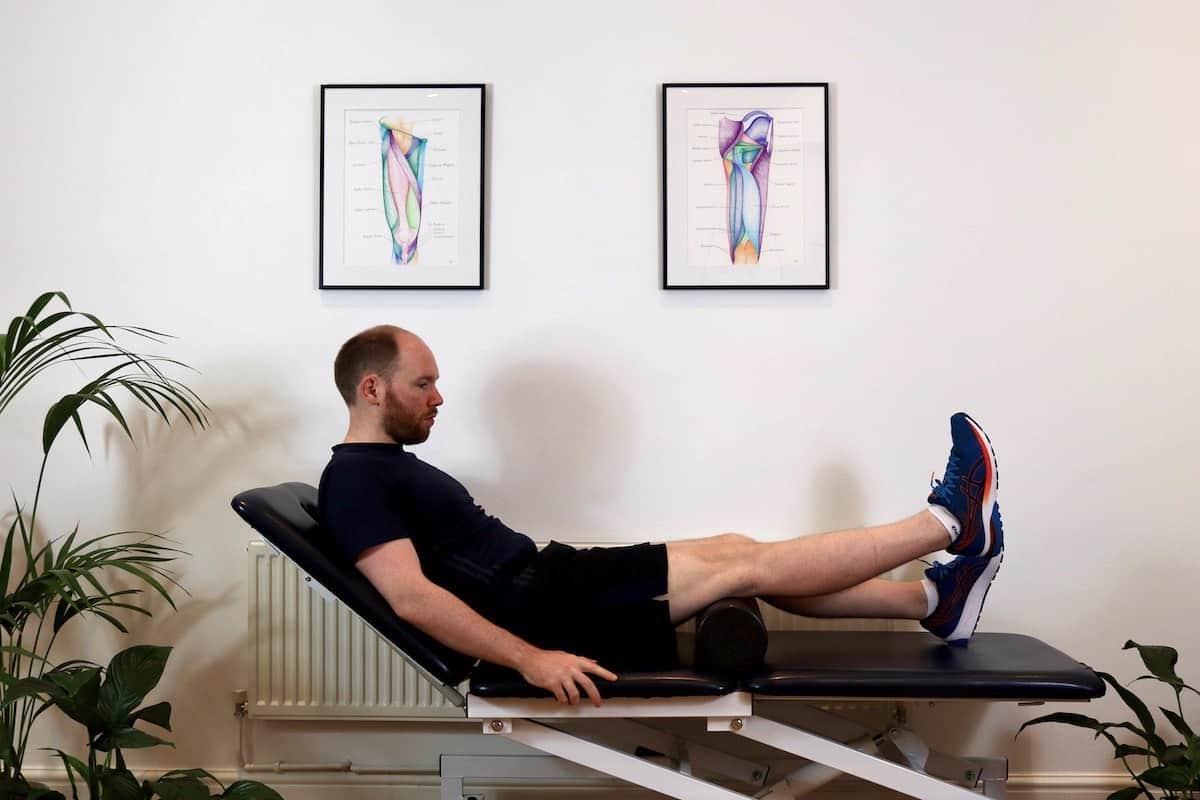
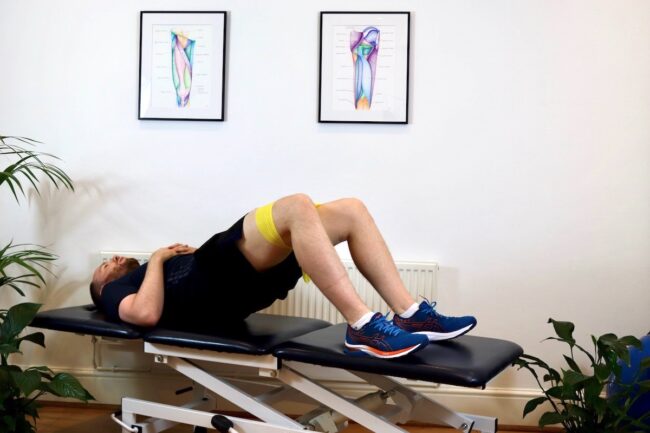
Lie on your back with a band around your thighs just above your knees. Position your feet away from your hips so that your knees are at a 70-90º angle. Squeeze your buttocks and lift your hips up, while pushing your thighs out into the band. You should feel your buttocks and the back of your thighs working.
Lift and lower slowly for 15 repeats, then relax, and repeat 3x.
Stand with your feet hip-width apart and a band around your thighs, just above your knees. Lower your pelvis down and back into a shallow squat while keeping pressure outwards into the resistance band. Squeeze your buttocks and push your pelvis forwards to return to standing. You should feel your quadriceps and glutes working.
Lower down and back and stand up and forwards for 15 repeats, then relax and repeat 3 times.
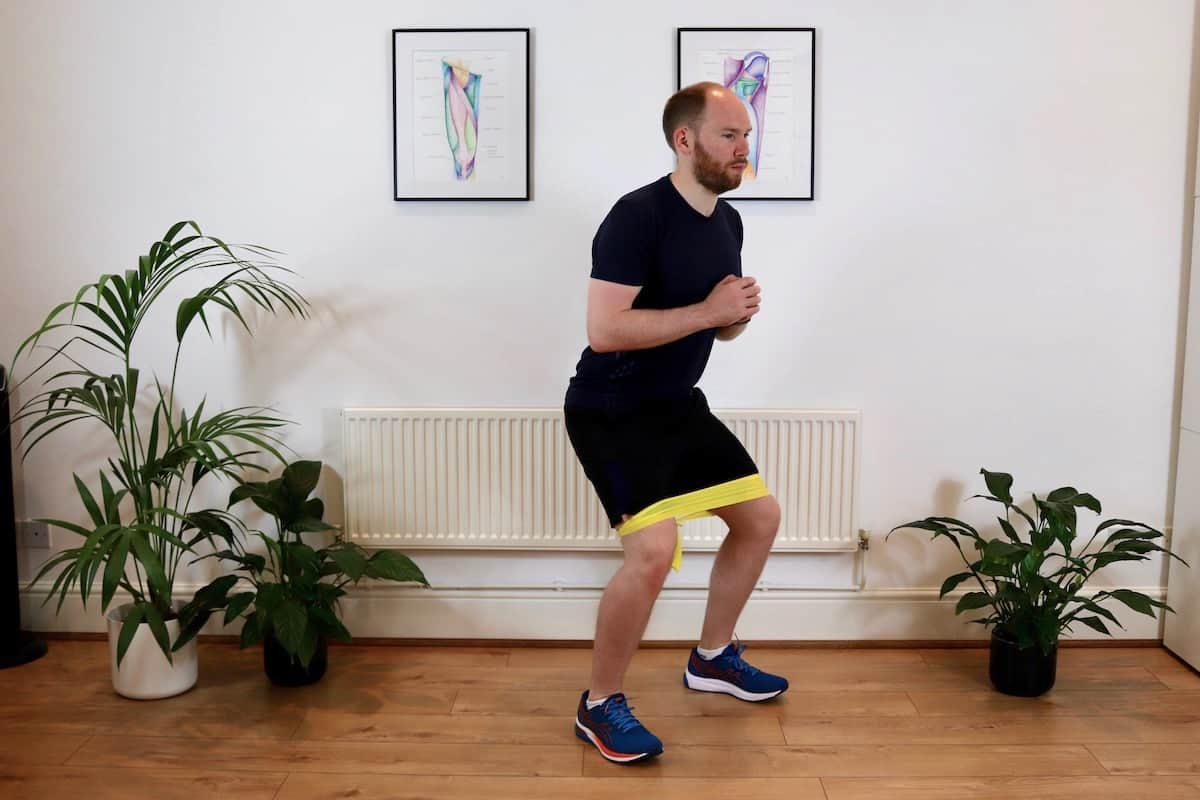

Stand with the ball of your feel on the edge of a step. With straight knees, lower your heels off the edge of the step, and then raise your heels as high as you can. You should feel your calf muscles working.
Lift and lower for 15 repeats, then relax, and repeat 3 times.
There are several exercises that are to be avoided when you have a sprained ACL. Depending on the severity of the sprain some of these exercises will be clearly a poor choice. With lower-grade sprains they might seem ok but then cause problems after doing the exercises, such as swelling of the knee. These exercises are best to be avoided as they put more stress on the injured ligament which needs to be rested to give it the best opportunity to repair:
Physiotherapy with James McCormack
This article is written by James McCormack, a Lower Limb Specialist who is an expert in treating knee ligament injuries.
This is not medical advice. We recommend a consultation with a medical professional such as James McCormack if you are experiencing any of the symptoms discussed in this article. James offers Online Physiotherapy Appointments weekly and face-to-face appointments in his London clinic.